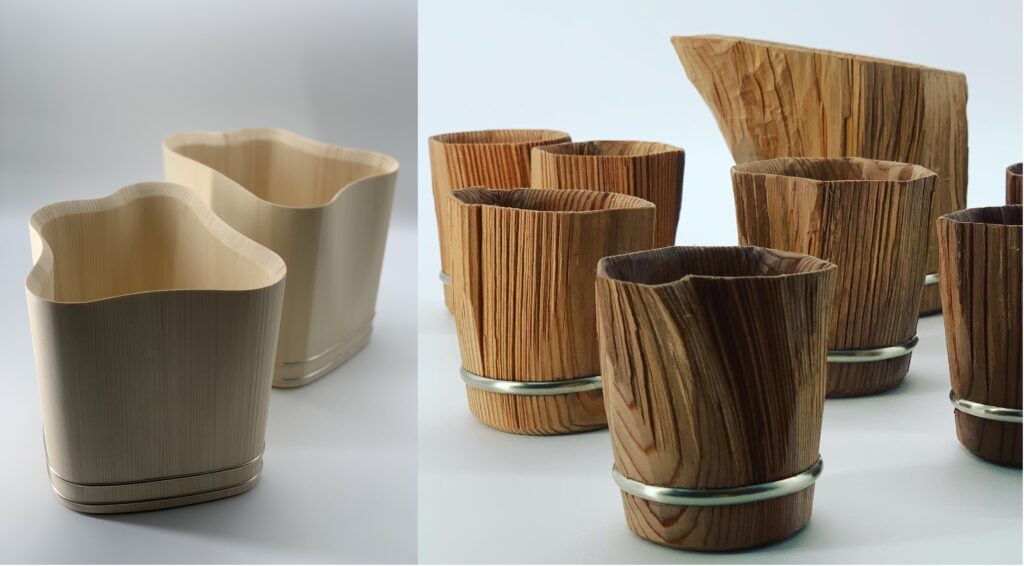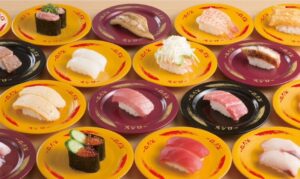Into the world of Japanese culture through awarded pieces
The Japan Cultural Promotion Project held the 1st Japanese Culture Grand Prix with eight winning works selected in total. The theme was “Tradition and Future”.

The Japan Culture Promotion Project organised the Grand Prix to honour outstanding works of Japanese culture by domestic companies, organisations and individuals engaged in Japanese culture. Regardless of nationality or residence.
Let’s get to know some of the traditional Japanese culture with some of the winning artworks.

・Grand Prix: WAVE series (right)/YORISIRO series (left)
Using the traditional wooden barrel-making (箍, taga) technique dating back more than 700 years. The “Wave” series is from meticulous calculation and logic using leverage mechanisms to eliminate upward tension and create a free waveform. The “YORISIRO” series shows the natural curvature of the wood as it is.

・Semi-grand Prix: Calligraphy Cubism “Natural”
Calligraphy is a 2D art form written with ink on paper, cloth or board. But, it originally was a 3D art form, engraved on bones, turtle shells, stones or metal. This work beautifully illustrates the beauty of space itself, even without reading the words.
■ Excellent Awards

・SANJIKU-KUMIORI®-triaxial braid Japanese textiles-“Kujaku Kouki”
It is Japan’s last obi sash, “Karagumi Hirao”, handed down in Shosoin*. The sanjiku-kumiori technique came from the Japanese traditional braiding artform: kumihimo, which has been passed down for roughly 1000 years.
*The Shōsō-in is the treasure house of Tōdai-ji Temple in Nara, Japan.
・Structure system “Kumiko Load-bearing Wall”
Kumiko is a traditional Japanese woodworking technique of assembling wood into geometric patterns without any nails. The work used this technique to combine shaved bar stocks without nails to create a new structural-architectural wall.
・Porcelain “Yuragi”
The hotarude technique originated in the China Ming dynasty involves simply making tiny round holes. The work is challenging to create as it used the technique to make a massive curved slit on a thin pottery wheel moulded vessel.
・Lacquerware “Tansueru”
Kanshitsu is a lacquer technique and one of the Oriental techniques of sculpture. Lacquer is applied to linen or Japanese washi paper; lacquer is mixed with powdered wood to form the shape. What sets the work apart is the contrasting glossy black lacquer on the inside and the Japanese washi paper on the outside.
Apart from modern culture, Japan is a country rich in traditions.
On your next trip, why not bring home one of Japan’s exquisite traditional crafts and arts as a memento of your trip.
We have a network of Japanese companies keen to expand into the Halal market in Malaysia & Indonesia.
If you are interested in connecting with sustainable technology companies in Japan, simply JOIN the network from below. We will match the right one for you!




